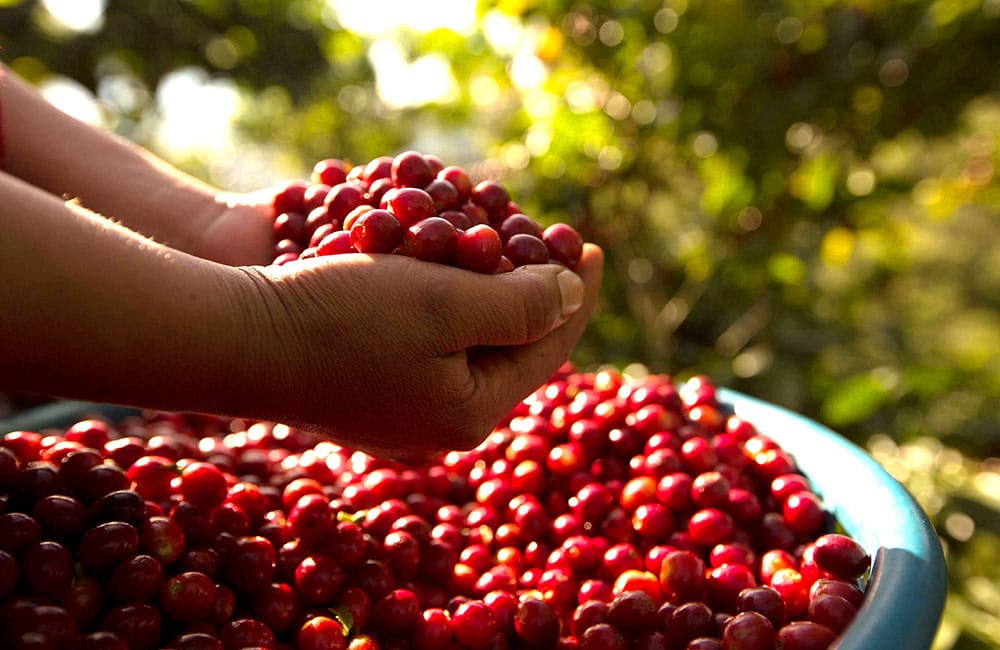El café de Guatemala es reconocido a nivel mundial por su calidad excepcional, sus perfiles de sabor complejos y la diversidad de sus regiones productoras. Con una rica historia cafetera, condiciones climáticas ideales y una tradición de cultivo que se remonta a siglos atrás, Guatemala se ha consolidado como uno de los países más importantes en la producción de café de especialidad.
1. Historia del Café en Guatemala

Finca de cultivo de café de especialidad en Guatemala
El cultivo del café en Guatemala comenzó en el siglo XVIII, cuando los colonos introdujeron las primeras plantas de cafeto. Sin embargo, fue en el siglo XIX cuando la producción de café se convirtió en el motor de la economía guatemalteca. Gracias a su clima diverso y sus suelos volcánicos ricos en nutrientes, Guatemala rápidamente se destacó por la calidad de su café, lo que atrajo la atención de exportadores internacionales.
2. Regiones Productoras de Café en Guatemala

Plantación de café en Guatemala
Guatemala cuenta con varias regiones cafetaleras, cada una con características únicas que influyen en el perfil de sabor del café:
1. Antigua: Con suelos volcánicos y un clima templado, produce cafés con notas de chocolate, caramelo y una acidez brillante.
2. Huehuetenango: Ubicada en las montañas del norte, ofrece cafés con una acidez pronunciada, notas afrutadas y cuerpo complejo.
3. Cobán: Con un clima húmedo y nuboso, sus cafés destacan por su acidez vibrante y sabores especiados.
4. Fraijanes: Con suelos volcánicos y altitudes elevadas, produce cafés con un sabor intenso y bien equilibrado.
5. Atitlán: Rodeado por volcanes y el lago Atitlán, ofrece cafés con un cuerpo completo y notas florales
3. Variedades de Café de Guatemala

Recolección manual de cerezas de café en Guatemala
Guatemala cultiva principalmente café arábica, con variedades que incluyen Bourbon, Caturra, Catuai y Typica. Estas variedades se adaptan bien a las diversas altitudes y climas del país, lo que contribuye a la riqueza de perfiles de sabor.
4. Procesos de Cultivo y Beneficiado

Secado de café de especialidad en Guatemala
El café de Guatemala se cultiva principalmente en pequeñas fincas, donde los agricultores emplean métodos tradicionales y sostenibles. Los procesos de beneficiado más comunes son:
-
Lavado: Resalta la acidez y la claridad de los sabores.
-
Honey: Aporta dulzura y un cuerpo más redondeado.
-
Natural: Intensifica las notas afrutadas y la complejidad.
5. Temporada de Cosecha

Recolección de café de especialidad en Guatemala
La cosecha del café en Guatemala varía según la región, pero generalmente se lleva a cabo entre noviembre y abril. Durante este período, las cerezas de café se recogen a mano para garantizar la selección de los frutos más maduros.
6. Perfil de Sabor del Café de Guatemala

Procesamiento del café de especialidad
El café de Guatemala es conocido por su:
-
Acidez brillante: Similar a la de frutas cítricas.
-
Cuerpo completo: Sedoso y con buena estructura.
-
Notas de sabor: Chocolate, caramelo, frutas rojas, especias y flores.
-
Aroma intenso: Dulce, especiado y floral.
7. Impacto Económico y Social

Pareja de caficultores de Guatemala
El café es una de las principales exportaciones de Guatemala y una fuente vital de empleo para millones de personas. La industria cafetera apoya a pequeños productores, cooperativas y comunidades rurales, contribuyendo al desarrollo económico y social del país.
8. Curiosidades sobre el Café de Guatemala
-
Denominación de origen: Algunas regiones, como Antigua, cuentan con denominación de origen protegida.
-
Premios internacionales: Los cafées guatemaltecos han ganado múltiples premios en competencias de café de especialidad.
-
Diversidad microclimática: Guatemala cuenta con más de 300 microclimas, lo que permite una amplia gama de perfiles de sabor.
9. Cómo Preparar y Disfrutar un Buen Café de Guatemala

Secado de café de especialidad en Guatemala
Métodos Recomendados:
- V60 y Chemex: Para resaltar la acidez y la complejidad.
- Prensa francesa: Para un cuerpo más completo y notas más intensas.
- Espresso: Para destacar la dulzura y el equilibrio.
Conclusión
El café de Guatemala es un reflejo de la pasión, la dedicación y la tradición de sus productores. Cada taza cuenta una historia de riqueza cultural, biodiversidad y un compromiso con la calidad. Descubrir el café de Guatemala es embarcarse en un viaje sensorial que deleita y sorprende en cada sorbo.









